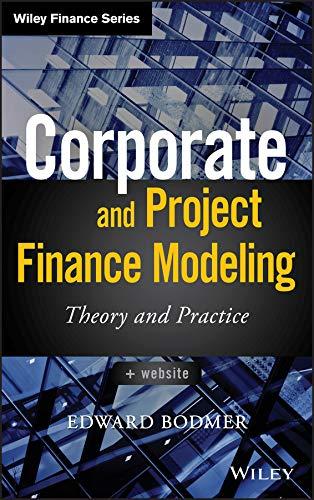Answered step by step
Verified Expert Solution
Question
1 Approved Answer
1. Which of these relations holds true? 6. The financial transaction x (0, r,2,6)/t (0.1,2,3) D (t,s) -1 -m(t, s) is an arbitrage for every

1. Which of these relations holds true? 6. The financial transaction x (0, r,2,6)/t (0.1,2,3) D (t,s) -1 -m(t, s) is an arbitrage for every 20 l is always an arbitrage, for every a is never an arbitrage, for any z. is an arbitrage only if r> 8 n (t, s u(t, s): 1+m(t, s) 2. The value of a deferred annuity, everything else being equal: 7. The periodic interest rate of a zero coupon bond, in the int [0, T] where T is the maturity of the bond, with buying pri decreases in the length of the deferral period. increases in the length of the deferral period. and notional C: 1s decreases in the number of instalments D is independent of the length of the deferral period. Dis PPC is C- P is 3. The IRR of a zero-coupon bond quoted 97 and with maturity 1 year is: 8. The duration of a coupon bond with maturity 3 years p annual coupons: zero 3% Around 2.9%. Around 3.1% can be lower than one year ranges between 0 and 3 years a can be greater than 3 years. is greater than one year and lower than 3 years 4. Consider a portfolio composed of a zero-coupon bond with maturity 1 year, notional 100 euros, and a coupon bond with maturity 2 years, notional 100 and payin with a nominal annual coupon rate of 4%. Considering that the ex investor has paid 180 to set up the portfolio at 0, her cash flow profile g semi-annual coupons 9. The value of a financial contract is equal to 0 accordin ponential law. Then: the contract is not far, according to that financial la is fair at time 0 according to any exponential law D the contract is fair according to that law at time 0 or D the contract is fair at any instant according to that ce is : (0,2, 102. 2.102)/(0.0.5, 1, 1.5.2.2.5). (-180, 4, 104.4, 104)/(0,05, 1,1.5,2). O f-180,2, 102, 2, 102)/10,0.5, 1, 1.5,2) tial law f-180,0, 104,0, 104)/10,0.5, 1, 1.5, 2,2.5) 10. At issuance, the price of a floating rate note with a 5. Consider the following financial law: W(t)W(s)I(1 2.2%)(t-a) + 1% (1-8)]. It is: the only time uniforrn and decomposable law time uniform and decomposable. is: O higher or lower to the notional, depending on the inte term structure. lower than the notional l equal to the notional time uniform, but not decomposable. not time uniform. higher than the notional. 1. Which of these relations holds true? 6. The financial transaction x (0, r,2,6)/t (0.1,2,3) D (t,s) -1 -m(t, s) is an arbitrage for every 20 l is always an arbitrage, for every a is never an arbitrage, for any z. is an arbitrage only if r> 8 n (t, s u(t, s): 1+m(t, s) 2. The value of a deferred annuity, everything else being equal: 7. The periodic interest rate of a zero coupon bond, in the int [0, T] where T is the maturity of the bond, with buying pri decreases in the length of the deferral period. increases in the length of the deferral period. and notional C: 1s decreases in the number of instalments D is independent of the length of the deferral period. Dis PPC is C- P is 3. The IRR of a zero-coupon bond quoted 97 and with maturity 1 year is: 8. The duration of a coupon bond with maturity 3 years p annual coupons: zero 3% Around 2.9%. Around 3.1% can be lower than one year ranges between 0 and 3 years a can be greater than 3 years. is greater than one year and lower than 3 years 4. Consider a portfolio composed of a zero-coupon bond with maturity 1 year, notional 100 euros, and a coupon bond with maturity 2 years, notional 100 and payin with a nominal annual coupon rate of 4%. Considering that the ex investor has paid 180 to set up the portfolio at 0, her cash flow profile g semi-annual coupons 9. The value of a financial contract is equal to 0 accordin ponential law. Then: the contract is not far, according to that financial la is fair at time 0 according to any exponential law D the contract is fair according to that law at time 0 or D the contract is fair at any instant according to that ce is : (0,2, 102. 2.102)/(0.0.5, 1, 1.5.2.2.5). (-180, 4, 104.4, 104)/(0,05, 1,1.5,2). O f-180,2, 102, 2, 102)/10,0.5, 1, 1.5,2) tial law f-180,0, 104,0, 104)/10,0.5, 1, 1.5, 2,2.5) 10. At issuance, the price of a floating rate note with a 5. Consider the following financial law: W(t)W(s)I(1 2.2%)(t-a) + 1% (1-8)]. It is: the only time uniforrn and decomposable law time uniform and decomposable. is: O higher or lower to the notional, depending on the inte term structure. lower than the notional l equal to the notional time uniform, but not decomposable. not time uniform. higher than the notional
Step by Step Solution
There are 3 Steps involved in it
Step: 1

Get Instant Access to Expert-Tailored Solutions
See step-by-step solutions with expert insights and AI powered tools for academic success
Step: 2

Step: 3

Ace Your Homework with AI
Get the answers you need in no time with our AI-driven, step-by-step assistance
Get Started


